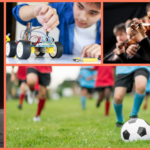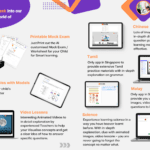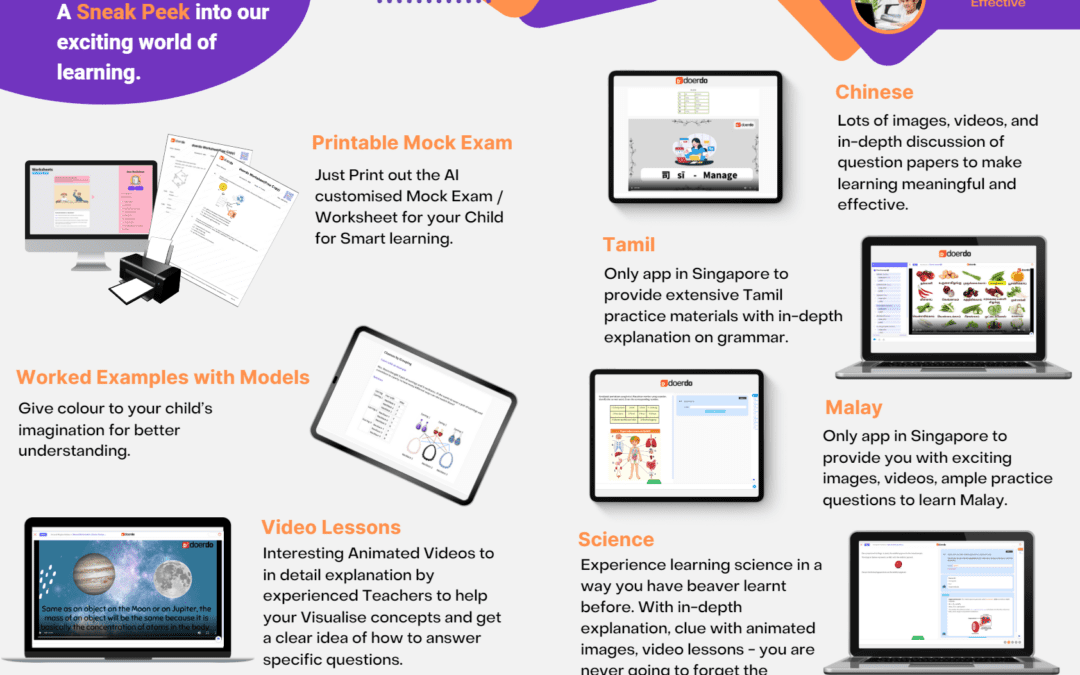In the ever-evolving realm of artificial intelligence, chatbots have taken center stage, transforming the way we engage with technology. Among these virtual conversationalists, ChatGPT, powered by Open AI‘s GPT-3.5 architecture, stands tall, captivating users with its impressive language capabilities. However, it is crucial to acknowledge that even this AI marvel has its limitations. In this blog, we uncover the boundaries of ChatGPT and shed light on its potential shortcomings in various real-life scenarios.

Domain-specific knowledge
ChatGPT has been trained on a vast amount of general knowledge, but it may not have specialized expertise in specific domains such as medicine, law, or engineering. Domain-specific chatbots may be better equipped to handle detailed questions in their respective fields. Suppose you have a specific medical condition and want to chat with a chatbot about your symptoms. A domain-specific medical chatbot could provide more accurate and specialized information about your condition, potential treatments, and recommended next steps.
Real-time information
ChatGPT’s knowledge cutoff is in September 2021, which means it may not have access to the latest real-time information or current events. Other chatbots that have regular updates can provide more up-to-date information. If you want to know the latest news updates, stock market trends, or sports scores, chatbots that have access to real-time information can provide you with the most up-to-date data.
Task-specific functionalities
Some chatbots are designed with specific tasks in mind, such as customer support, scheduling appointments, or providing weather forecasts. They may have built-in functionalities and integrations to fulfil these tasks more efficiently. Many chatbots are integrated into various platforms or services to provide specific functionalities. For instance, a chatbot on a food delivery app can help you place an order, track your delivery, or handle customer support inquiries related to your order.
Contextual memory
ChatGPT lacks long-term memory of past interactions within the same conversation. It treats each prompt as an isolated input, which means it may not retain information discussed earlier in the conversation as effectively as other chatbots that maintain contextual memory. In a conversation with a chatbot, contextual memory would enable the chatbot to remember previous information you provided. For example, if you were discussing travel plans with a chatbot, it would retain details like your preferred destinations, dates, and accommodation preferences throughout the conversation, making the interaction more seamless and personalized.
Customization and fine-tuning
While ChatGPT can be fine-tuned on specific prompts, it may not offer the same level of customization or adaptability as other chatbot frameworks that allow for more extensive modifications and training. Certain chatbot frameworks allow developers to customize the chatbot’s behaviour and responses according to specific requirements. For instance, an organization could train a chatbot specifically for their customer support needs, tailoring its responses to address frequently asked questions or handle specific scenarios unique to their business.
Understanding the Context
ChatGPT’s linguistic prowess is awe-inspiring, but it may stumble when it comes to grasping contextual nuances. Sarcasm, humour, and intricate subtleties of human communication can sometimes leave ChatGPT bewildered. We explore how these limitations can impact the accuracy and relevance of its responses in everyday conversations. Say, you’re engaged in a lively online discussion where sarcasm is prevalent. You make a sarcastic remark, expecting others to understand the intended humour. However, when ChatGPT joins the conversation, it fails to pick up on the sarcasm and responds with a literal interpretation, leading to confusion and miscommunication.
Cognitive Constraints
While ChatGPT can access vast amounts of information, it lacks the background knowledge and common sense that humans possess. We examine how this limitation can manifest in situations where logical reasoning, practical judgment, or understanding complex scenarios are required. For example, if you ask ChatGPT a question that requires practical judgment, such as “Should I quit my job and pursue my passion?” While ChatGPT can provide insights based on general information, it lacks the personal experience and common sense needed to understand your unique circumstances, making its response less reliable for important life decisions.
Emotional Intelligence
Emotions are a fundamental aspect of human interaction, yet ChatGPT falls short in this realm. We delve into the challenges it faces when attempting to comprehend and respond appropriately to the emotional nuances and complexities of human expression. In case you’re sharing a personal story with ChatGPT about a challenging experience you went through. The story contains a mix of sadness, frustration, and eventual triumph. As you expect empathy and understanding, ChatGPT responds with generic, pre-programmed sympathetic phrases that lack the depth and emotional comprehension necessary to provide meaningful support. Its limitations in grasping the complexity of human emotions can leave you feeling unheard or invalidated in your emotional journey.
Generating Structured Content
ChatGPT excels at generating concise and coherent sentences, but crafting long-form structured content is not its forte. We explore the limitations it faces in producing lengthy pieces of content that adhere to specific formats, structures, or narrative arcs. For example, if you need assistance writing a research paper with a specific structure and format. While ChatGPT can offer valuable insights and help with individual sections, it struggles to maintain coherence and ensure a cohesive flow throughout the entire document. Its contributions may require significant revision and refinement to meet the desired structural requirements.
Multitasking Abilities
ChatGPT thrives when focused on a singular task, but juggling multiple tasks simultaneously presents a challenge. We discuss the limitations of multitasking and the potential impact on ChatGPT’s effectiveness and accuracy when confronted with competing objectives. Say, you’re using ChatGPT to manage your schedule and simultaneously ask it to book a flight, make a dinner reservation, and find a suitable hotel for an upcoming trip. ChatGPT, being designed for single-task focus, struggles to handle multiple requests effectively. It might prioritize one task over the others, resulting in delayed or incomplete responses.
Ethical Considerations
AI models are trained on extensive datasets that may inadvertently contain biases or prejudices. We examine the potential for biased or discriminatory responses from ChatGPT and the ethical implications that arise from these limitations. If you ask ChatGPT about a sensitive social or political topic. Despite its language proficiency, ChatGPT’s responses are influenced by the biases present in the training data it has been exposed to. This can result in unintentional biased or discriminatory answers, underscoring the need for human oversight and critical evaluation of AI-generated content.
In conclusion
ChatGPT is undoubtedly a language luminary, dazzling us with its linguistic gymnastics. But like any superhero, it has its limitations. Its lack of common sense, emotional intelligence, occasional contextual hiccups, struggles with structured content, multitasking mishaps and its limitations in domain-specific knowledge, real-time information, task-specific functionalities, Contextual memory, customization and fine-tuning remind us that even AI has its boundaries. So, let’s celebrate its strengths while understanding its quirks.
Remember, verify the information it provides, and embrace the evolving AI landscape with curiosity and a pinch of skepticism. With ChatGPT by our side, we’ll ride the AI wave, revelling in its marvels while navigating the uncharted territories of its limitations!
Frequently asked questions
What are the limitations of ChatGPT in terms of generating accurate information?
ChatGPT relies on the data it was trained on, which is current up until September 2021. Since then, new information may have emerged, rendering certain answers outdated or incorrect. It does not possess real-time awareness of world events, so it may not have the most recent updates or knowledge on rapidly changing situations. Its responses are based on patterns and examples it has learned from training data, which means it might not always provide factually accurate or verified information.
How does ChatGPT handle subjective or controversial topics?
ChatGPT learns from a diverse range of sources, including internet text, which can contain biased or opinionated viewpoints. As a result, it may inadvertently reflect or amplify biases present in the data it was trained on. It does not possess personal opinions or beliefs, but it may generate responses that appear to favour one side of an argument due to the training data it has processed.
It’s important to critically evaluate the responses provided by ChatGPT and cross-reference them with multiple reliable sources to gain a more comprehensive understanding of subjective or controversial topics.
What are the limitations of ChatGPT in understanding context and intent?
The model’s text-based nature means it cannot perceive non-verbal cues, such as tone of voice or body language, which can be crucial for understanding context in human communication.
Can ChatGPT generate harmful or inappropriate content?
Users should exercise caution and report any harmful or inappropriate outputs encountered while using ChatGPT to help improve its moderation capabilities.
What are the limitations of ChatGPT in providing specific professional or specialized advice?
In cases where specific expertise is required, it’s advisable to consult professionals or trusted sources who have the relevant qualifications and experience. ChatGPT can still provide useful insights or general information to facilitate understanding, but it should not be considered a substitute for expert advice.
Explore more on this site:
10 Incredible And Exciting Uses Of ChatGPT (doerdo.com)
5 Notable Alternatives To Chat GPT: AI Breakthroughs (doerdo.com)
5 Ways To Get Students Interested In Coding – From Fun Projects To Useful Skills! – Doerdo













